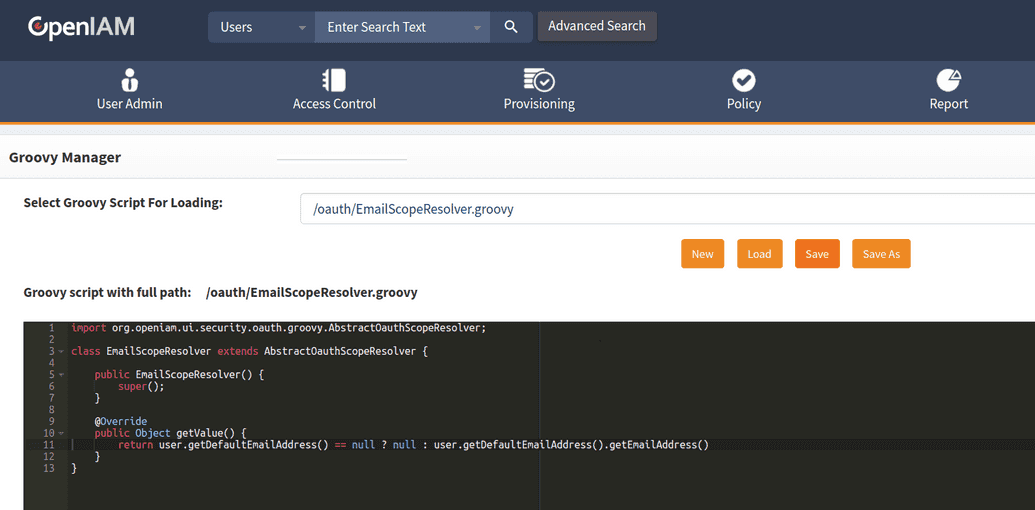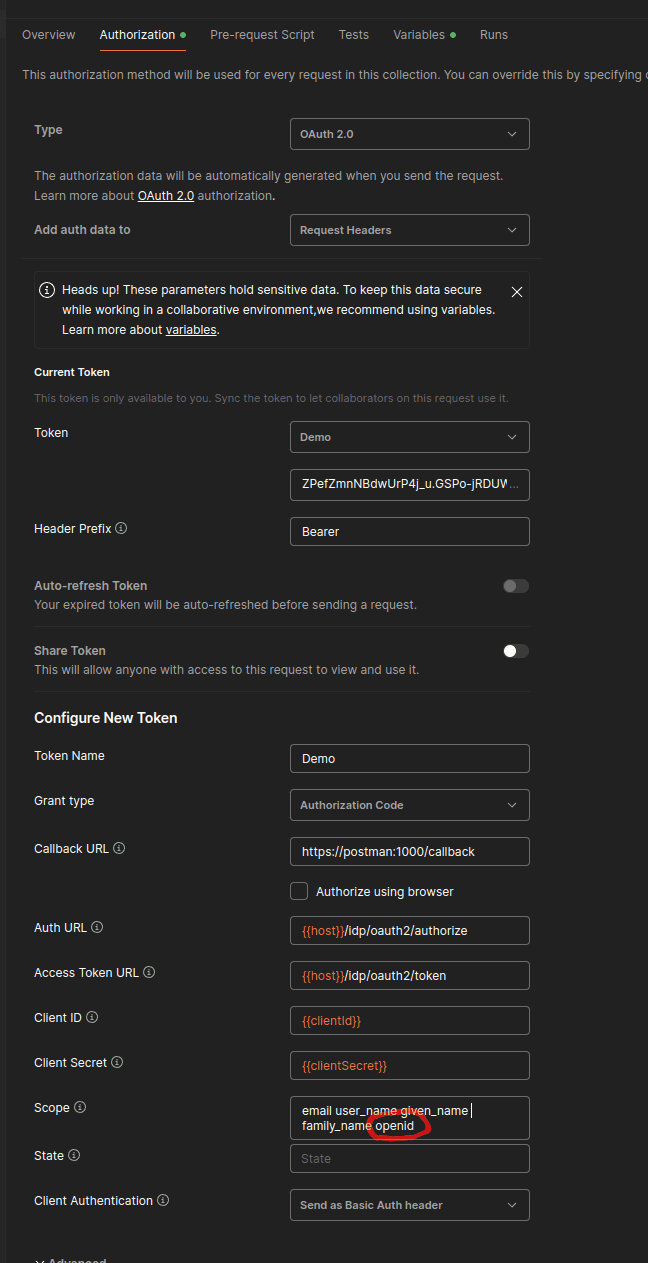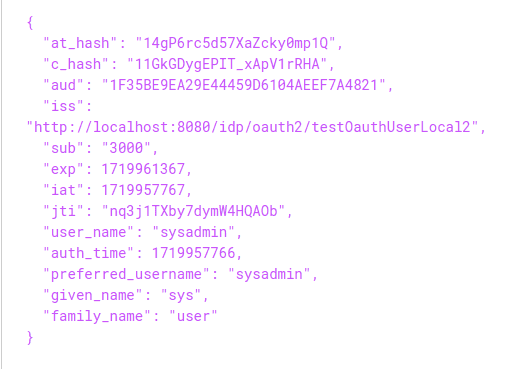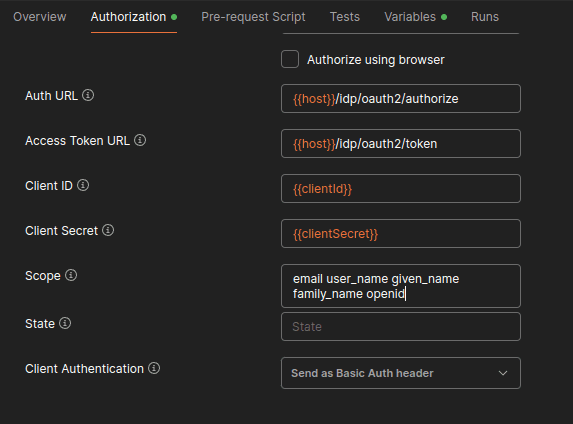Authorization code grant type
OAuth allows using different authorization types for different use case scenarios:
- Authorization code.
- PKCE.
- Client credentials,
- Device code,
- Refresh token.
As an example, the authorization code grant type will be configured in this document.
To get user attributes in id_token on Authorization Code grant type (like email, address, etc.), perform the next steps.
- Set groovy script for required scope (for example, an email). Go to webconsole > Access control > Resource. Apply OAuth scope filter and select the required scope by clicking on Edit.
- In the scope configuration window opened find the Groovy Script field and set the
/oauth/EmailScopeResolver.groovyscript. The example of the cope code is given below.
- In authorization requests scope use
openid. Below, a Postman example is given.
- You will get a response, similar to the following.
There are several scopes that must work without a groovy script, for example the following.
given_namefamily_namemiddle_namenicknameuser_namepreferred_usernamepicturegenderbirthdatelocaleupdated_atphone_number_verifiedemail_verified
Hence, you can get a response for them without an additional groovy script, as shown below.
Note that in OpenIAM version 4.2.1.10 we have a limit for Scope field, comprising 100 characters.






